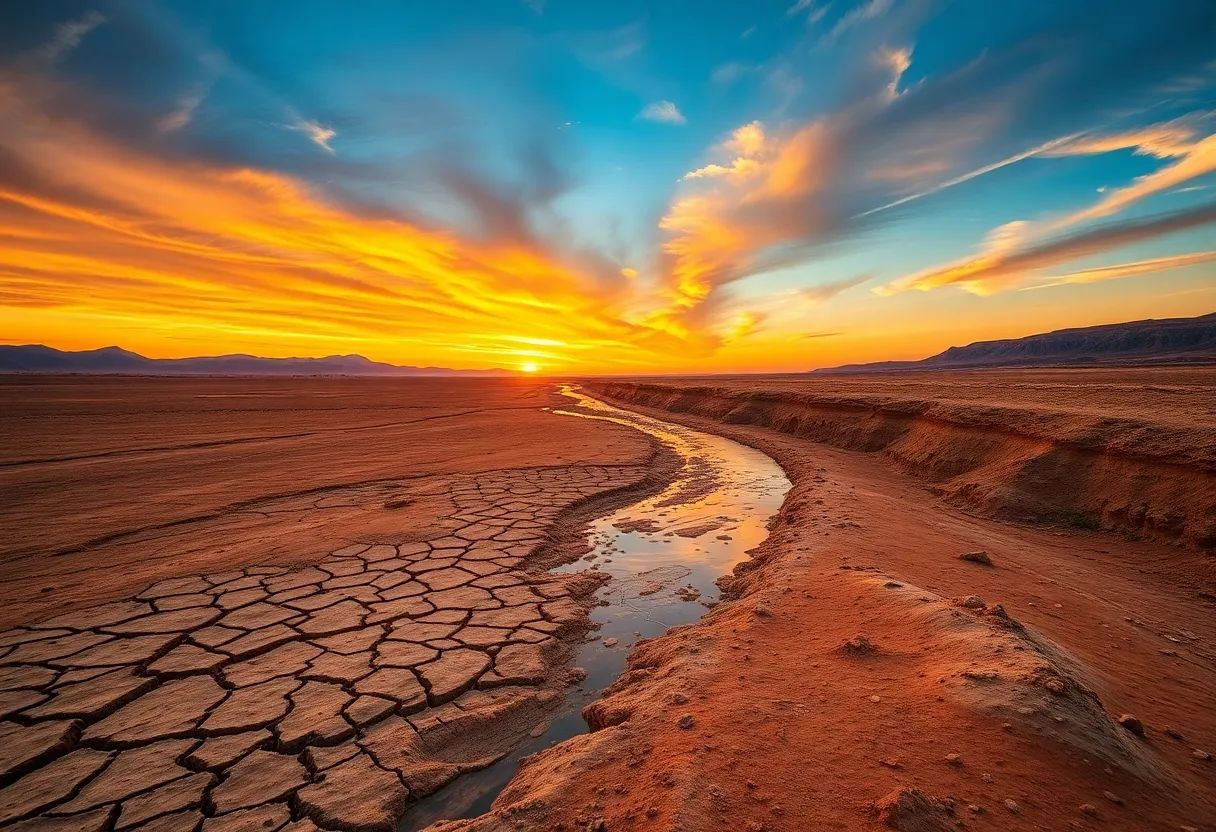News Summary
Arizona, along with Nevada and Mexico, is set to face further reductions in its Colorado River water allocations due to severe drought conditions. The U.S. Bureau of Reclamation announced an 18% cut for Arizona and a 5% cut for Mexico, while Nevada maintains a 7% reduction. The prolonged drought and overuse of resources demand urgent negotiations for sustainable water management. As stakeholders discuss future strategies, the situation highlights the critical importance of effective management in sustaining regional economies and agriculture.
Arizona Faces Further Colorado River Water Cuts Amid Ongoing Drought
Arizona, along with Nevada and Mexico, will see additional reductions in Colorado River water allocations due to prolonged drought conditions impacting the western United States. The U.S. Bureau of Reclamation announced these cuts, which will significantly affect water availability for agricultural and urban areas.
Effective immediately, Arizona will lose 18% of its total water allocation from the Colorado River, while Mexico will face a 5% reduction. Nevada is expected to maintain its cuts at 7%, as the state already receives considerably less water compared to its counterparts, Arizona and California. Notably, California will not incur any reductions, thanks to its senior water rights, which assign it priority access during times of shortage.
Water Management in the Context of Drought
The Colorado River is vital for the water supply of seven U.S. states, 30 Native American tribes, and two Mexican states, making these reductions critical to regional water management. The ongoing drought has led to decades of overuse of the river’s resources, compounded by climate change, resulting in a gap between available water and demand.
Since 2022, mandated water cutbacks at Lake Mead have been implemented annually. 2023 witnessed some of the most severe cuts, which have significantly impacted Arizona farmers who depend heavily on this water source for irrigation. The situation underscores the urgency for states to negotiate a sustainable agreement on water management.
Negotiations and Future Projections
Negotiations are underway among the states for a new long-term strategy to handle Colorado River water distribution during dry conditions. A preliminary agreement is anticipated by mid-November, with a final decision expected by mid-February. These discussions come after the previous administration set deadlines for states to come to terms to avert federal intervention in the matter.
The historical context of the Colorado River management reveals that agreements such as the 1922 Colorado River Compact were based on outdated estimates of water availability that do not reflect the current realities. In light of further restrictions, Upper Basin states—including New Mexico, Colorado, Wyoming, and Utah—will also face reduced water availability after meeting their obligations to Lower Basin states like Nevada, Arizona, and California.
Challenges in Water Management
Complications arise due to water loss from evaporation and inadequate infrastructure, making management of this critical resource more challenging. Ongoing discussions involve all major water users who are hesitant to give up their allocated shares, especially as they prepare for a reality of diminishing water supplies.
To address these issues, stakeholders are considering adopting a natural flow approach for allocating Colorado River water. This method would prioritize water distribution based on historical averages rather than rigid quotas, promoting a more sustainable management style. Furthermore, voluntary conservation measures by the Lower Basin states have helped lessen the impact of more severe cuts, although conservation projects in the Upper Basin states are currently stalled due to delays in the distribution of federal funds.
Importance of Colorado River Management
The management of the Colorado River is crucial for sustaining regional economies, agriculture, and hydropower generation. Upcoming conferences will focus on balancing water usage against resource availability, emphasizing the need for sustainable guidelines to prevent reactive management practices that emerge from crises. The necessity for effective water management strategies is more pressing than ever as drought conditions persist and threaten the stability of essential water resources in the region.
Deeper Dive: News & Info About This Topic
- Salt Lake Tribune: Lake Powell Water Levels
- AZFamily: Arizona Receiving Less Water
- Nevada Current: Another Year of Water Cuts
- ABC15: Continued Drought Puts Pressure on States
- Wikipedia: Colorado River

Author: STAFF HERE PHOENIX WRITER
The PHOENIX STAFF WRITER represents the experienced team at HEREPhoenix.com, your go-to source for actionable local news and information in Phoenix, Maricopa County, and beyond. Specializing in "news you can use," we cover essential topics like product reviews for personal and business needs, local business directories, politics, real estate trends, neighborhood insights, and state news affecting the area—with deep expertise drawn from years of dedicated reporting and strong community input, including local press releases and business updates. We deliver top reporting on high-value events such as the Waste Management Phoenix Open, Cactus League Spring Training, and Arizona State Fair. Our coverage extends to key organizations like the Greater Phoenix Chamber of Commerce and Visit Phoenix, plus leading businesses in technology and healthcare that power the local economy such as Intel and Banner Health. As part of the broader HERE network, including HERETucson.com, we provide comprehensive, credible insights into Arizona's dynamic landscape.





